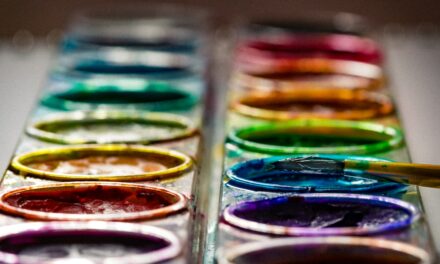Iridescent and metallic paints have captivated artists and designers alike for centuries, offering a unique way to infuse artworks with depth and luminosity. These paints are not merely about colour; they are about the interplay of light and surface, creating a dynamic visual experience that changes with the viewer’s perspective. Iridescent paints exhibit a shifting spectrum of colours, reminiscent of a soap bubble or the surface of a peacock feather, while metallic paints provide a lustrous sheen that mimics the appearance of metals like gold, silver, and bronze.
Both types of paint can elevate a piece from the ordinary to the extraordinary, making them invaluable tools in the artist’s arsenal. The allure of these paints lies in their ability to transform surfaces into vibrant, shimmering landscapes. Artists have long been drawn to the way these paints can evoke emotion and intrigue, inviting viewers to engage more deeply with the work.
Whether used in fine art, crafts, or design projects, iridescent and metallic paints offer a wealth of possibilities for creative expression. As we delve deeper into the science behind these paints, their applications, and techniques for their use, we will uncover the myriad ways they can enhance artistic endeavours.
Summary
- Iridescent and metallic paints create reflective effects by using special pigments that interact with light to produce a shimmering or metallic appearance.
- When choosing iridescent and metallic paints, consider factors such as the base colour, the type of pigment used, and the desired reflective effect.
- Techniques for using iridescent and metallic paints include layering, blending, and using different application tools to achieve unique reflective effects.
- Experiment with different colour combinations to create unique reflective effects, such as mixing complementary or contrasting colours to enhance the shimmering or metallic appearance.
- Iridescent and metallic paints can be used in various art and design applications, such as painting, mixed media, and decorative finishes, to add depth and visual interest to the work.
The Science Behind Iridescent and Metallic Paints: How They Create Reflective Effects
At the heart of iridescent and metallic paints lies a fascinating interplay of science and artistry. Iridescent paints typically contain microscopic platelets made from materials such as mica or synthetic compounds. These platelets are coated with various metal oxides that create a thin film interference effect.
When light strikes the surface of these paints, it reflects off the different layers of the platelets, resulting in a spectrum of colours that shift depending on the angle of view. This phenomenon is akin to how a prism disperses light into a rainbow, creating an enchanting visual experience that can change dramatically with movement. In contrast, metallic paints achieve their reflective quality through the inclusion of finely ground metal particles or metallic pigments.
These particles reflect light in a manner similar to polished metal surfaces, producing a brilliant sheen that can range from subtle to strikingly bold. The size and shape of these particles play a crucial role in determining the final appearance of the paint. Larger particles tend to create a more textured finish, while smaller particles yield a smoother, more uniform surface.
Understanding these scientific principles allows artists to make informed choices about which type of paint to use for specific effects, enhancing their creative vision.
Choosing the Right Iridescent and Metallic Paints: Factors to Consider
When selecting iridescent or metallic paints for a project, several factors come into play that can significantly influence the outcome. One of the primary considerations is the intended effect. For instance, if an artist seeks to create a subtle shimmer that enhances rather than dominates the composition, they might opt for iridescent paints with softer colour shifts.
Conversely, if boldness is desired, metallic paints with high opacity and reflective qualities may be more suitable. The choice between these two types often hinges on the overall aesthetic goals of the artwork. Another important factor is compatibility with other materials.
Artists must consider how iridescent and metallic paints will interact with their chosen substrates and mediums. Some paints may require specific primers or surfaces to achieve optimal adhesion and reflectivity. Additionally, understanding the drying times and layering capabilities of these paints is essential for successful application.
Artists should also take into account the environmental conditions in which they will be working; humidity and temperature can affect how these paints behave during application and drying. By carefully evaluating these factors, artists can select the most appropriate products for their creative endeavours.
Techniques for Using Iridescent and Metallic Paints: Tips for Achieving Reflective Effects
Mastering the application of iridescent and metallic paints requires practice and experimentation with various techniques. One effective method is layering, where artists apply multiple coats of paint to build depth and complexity in their work. For instance, starting with a base layer of a solid colour can provide a rich foundation upon which iridescent or metallic paints can be applied.
Another technique involves dry brushing, which entails using a brush with minimal paint to create texture and highlight specific areas of a piece. This method works particularly well with metallic paints, as it allows artists to achieve a subtle sheen without overwhelming the underlying colours.
Additionally, sponging can be employed to create interesting patterns and textures; by dabbing a sponge into iridescent paint and applying it to the surface, artists can achieve unique effects that mimic natural phenomena like water reflections or shimmering surfaces.
Exploring Colour Combinations with Iridescent and Metallic Paints: Creating Unique Reflective Effects
The interplay of colour is crucial when working with iridescent and metallic paints, as these pigments can dramatically alter how colours are perceived. Artists often experiment with complementary colour schemes to create striking contrasts that enhance the reflective qualities of their work. For example, pairing warm metallic golds with cool iridescent blues can produce a captivating visual tension that draws the viewer’s eye.
Moreover, layering different colours can yield unexpected results; when an iridescent paint is applied over a darker base coat, it can create an illusion of depth that adds intrigue to the composition. Artists may also consider using transparent glazes over metallic layers to soften their appearance while still allowing the underlying shine to peek through. This approach not only enriches the colour palette but also adds complexity to the reflective effects, making each piece uniquely engaging.
Applications of Iridescent and Metallic Paints: Using Reflective Effects in Art and Design
The versatility of iridescent and metallic paints extends beyond traditional canvas art; they find applications across various fields including fashion design, interior decor, and product packaging. In fashion, designers often incorporate these paints into textiles or accessories to create eye-catching garments that shimmer under different lighting conditions. Similarly, in interior design, walls painted with iridescent finishes can transform spaces by adding depth and dimension, creating an atmosphere that feels both modern and dynamic.
In product packaging, brands leverage metallic finishes to convey luxury and sophistication. The reflective quality of these paints can elevate an ordinary product into something visually striking that captures consumer attention on crowded shelves. Artists and designers alike are increasingly recognising the potential of these materials to enhance their work across diverse mediums, making iridescent and metallic paints essential tools in contemporary creative practices.
Maintenance and Care of Iridescent and Metallic Paints: Preserving Reflective Effects
To ensure that artworks featuring iridescent and metallic paints maintain their vibrancy over time, proper maintenance and care are paramount. One key aspect is protecting finished pieces from direct sunlight; prolonged exposure can cause fading or dulling of reflective effects. Displaying artworks in environments with controlled lighting can help preserve their brilliance while allowing viewers to appreciate their dynamic qualities.
Additionally, cleaning techniques should be approached with caution. Dusting with a soft cloth or using gentle cleaning solutions is advisable to avoid damaging delicate surfaces. Artists may also consider applying a protective varnish specifically designed for use with iridescent or metallic finishes; this can provide an extra layer of protection against environmental factors while enhancing the overall sheen of the artwork.
By taking these steps, artists can ensure that their creations remain as captivating as they were on the day they were completed.
Embracing the Versatility of Iridescent and Metallic Paints
In conclusion, iridescent and metallic paints offer an exciting realm of possibilities for artists and designers seeking to explore new dimensions in their work. From understanding the science behind their reflective properties to mastering techniques for application, these materials empower creators to push boundaries and innovate within their chosen mediums. The ability to manipulate light through colour combinations and layering techniques allows for unique expressions that resonate with viewers on multiple levels.
As we continue to embrace advancements in art materials and techniques, it is clear that iridescent and metallic paints will remain at the forefront of artistic exploration. Their versatility not only enhances traditional art forms but also finds relevance in contemporary design practices across various industries. By harnessing the power of these reflective pigments, artists can create works that not only capture attention but also evoke emotion—transforming simple canvases into extraordinary visual experiences that shimmer with life.
If you are interested in exploring the intersection of art and environmental activism, you may want to check out the article Clean Up Movements vs Artistic Expression: Controversies in Street Art. This thought-provoking piece delves into the debates surrounding street art and the tensions between preserving artistic expression and maintaining urban cleanliness. It offers a unique perspective on how art can both challenge and coexist with societal norms.
FAQs
What are iridescent and metallic paints?
Iridescent paints contain tiny pearlescent particles that create a shifting rainbow effect when viewed from different angles, while metallic paints contain metallic flakes that produce a reflective, shiny finish.
How are iridescent and metallic paints used?
Iridescent and metallic paints are commonly used in art, crafts, automotive finishes, and interior design to add a unique, eye-catching element to surfaces.
What surfaces can iridescent and metallic paints be applied to?
Iridescent and metallic paints can be applied to a variety of surfaces including paper, canvas, wood, metal, plastic, and fabric.
How are iridescent and metallic paints different from regular paints?
Iridescent and metallic paints differ from regular paints in that they contain special reflective particles that create a shimmering effect, whereas regular paints have a flat, non-reflective finish.
Are iridescent and metallic paints durable?
Iridescent and metallic paints can be durable, especially when properly sealed with a clear topcoat. However, they may require more care and maintenance compared to regular paints to preserve their reflective effects.


